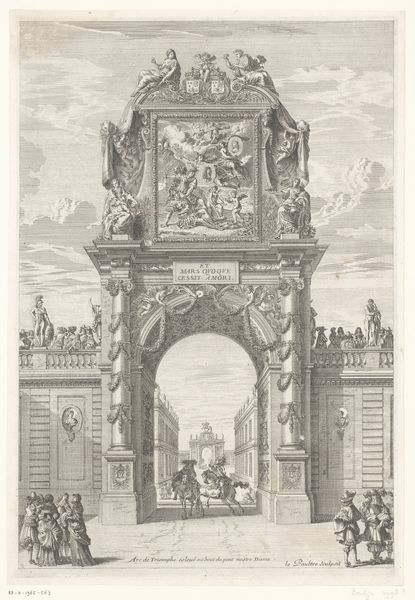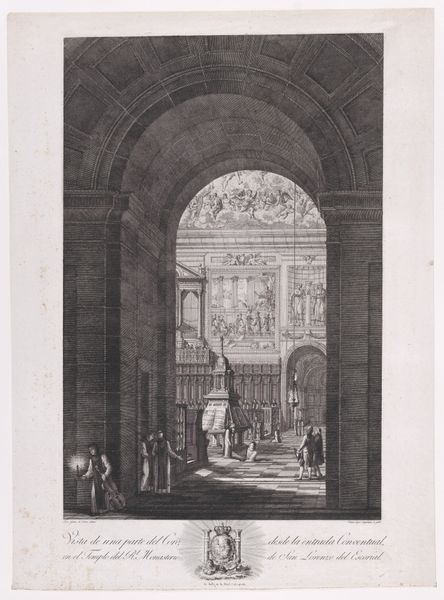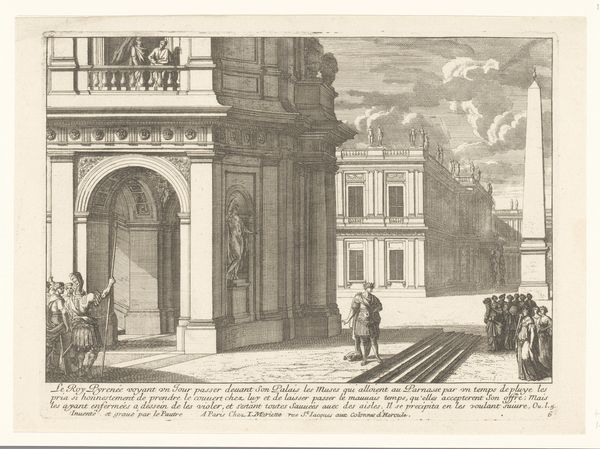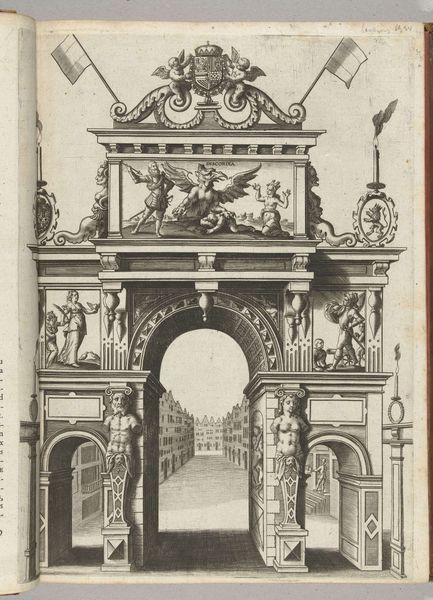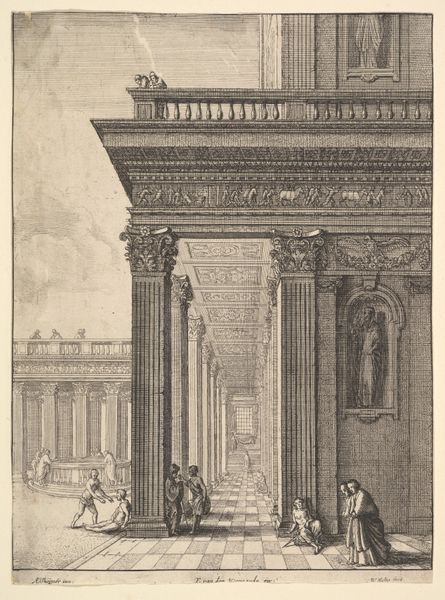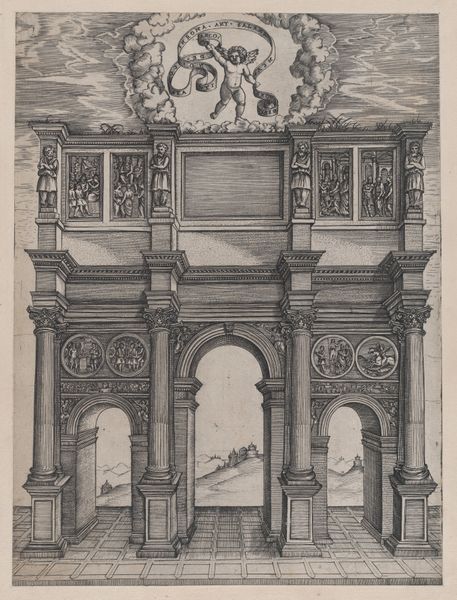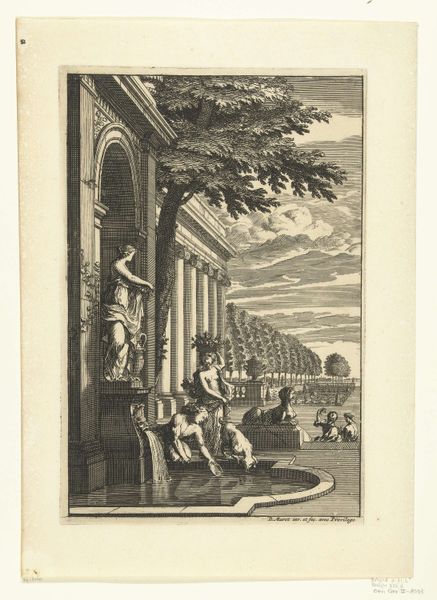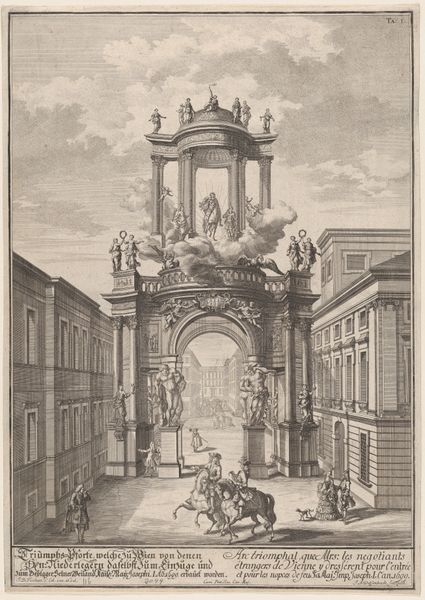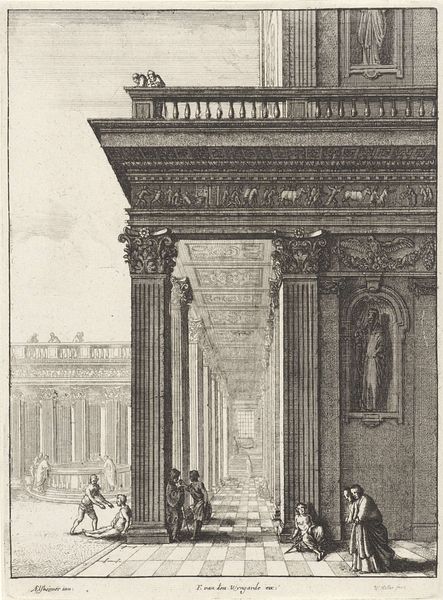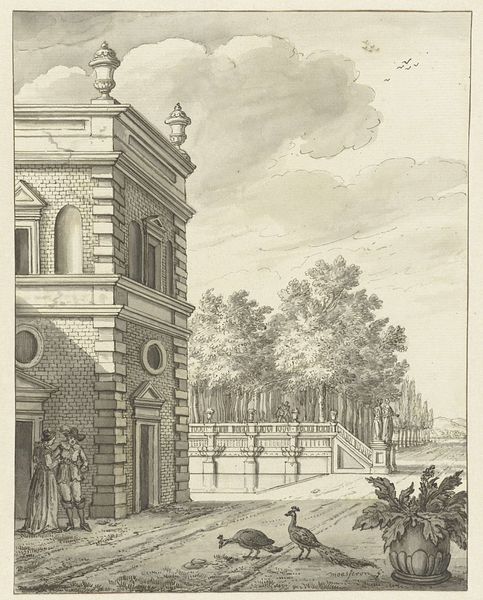
Titelprent met personificaties van de kunsten, beschenen door licht dat weerkaatst op de wapenschilden van de koning en kardinaal Mazarin 1654
0:00
0:00
drawing, print, engraving, architecture
#
drawing
#
baroque
# print
#
form
#
line
#
cityscape
#
engraving
#
architecture
Dimensions: height 336 mm, width 235 mm
Copyright: Rijks Museum: Open Domain
Curator: The first impression this etching gives is one of dramatic artifice, wouldn’t you agree? There’s a staged quality that immediately strikes the eye. Editor: I agree. Before us is a title page, now residing at the Rijksmuseum, known as “Titelprent met personificaties van de kunsten, beschenen door licht dat weerkaatst op de wapenschilden van de koning en kardinaal Mazarin,” created around 1654 by Israel Silvestre. It's quite a mouthful. The piece combines line etching and engraving to showcase architectural elements and figures under a heavenly light. Curator: Knowing that it's connected to Cardinal Mazarin's patronage adds another layer. It shifts my understanding towards considering questions around wealth and the ways it shapes the development of culture. Who gets to decide what "good art" is? Editor: Precisely. Mazarin, as a significant figure in French politics and a patron of the arts, heavily influenced the Baroque style’s development. This image functions as propaganda; it celebrates the intersection of power, art, and divinity by associating the King and Mazarin with divine light. Note the arms of both lit by sun rays from a break in the clouds. Curator: That symbolism – divine light shining on the arms of powerful men – is so heavy-handed! It makes you consider the social hierarchies reflected in these commissioned pieces. Did ordinary people have access to these depictions? Or were these images exclusively for the consumption of the elite? Editor: Access would have been limited, of course. Silvestre created this during a time when the art world was heavily influenced by royal and religious commissions. By examining this artwork, we can start a necessary conversation about the complex relationships between artists, power structures, and the wider populace. Curator: Right. It serves as a reminder to constantly critique the roles that identity and politics play in artistic creation and reception. These power dynamics shaped even the very lines in this print! Editor: Ultimately, it's this blend of artistic skill and social history that renders the artwork an engaging subject, far beyond its initial aesthetic appeal. It helps reveal the power that art had and has.
Comments
No comments
Be the first to comment and join the conversation on the ultimate creative platform.
